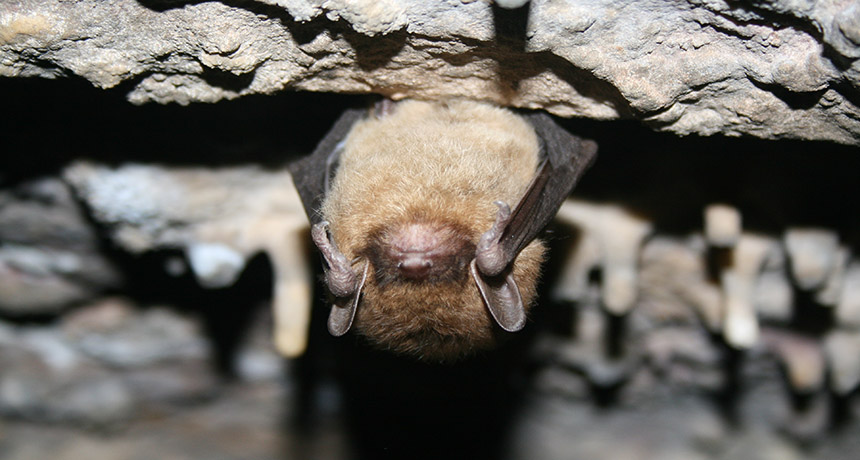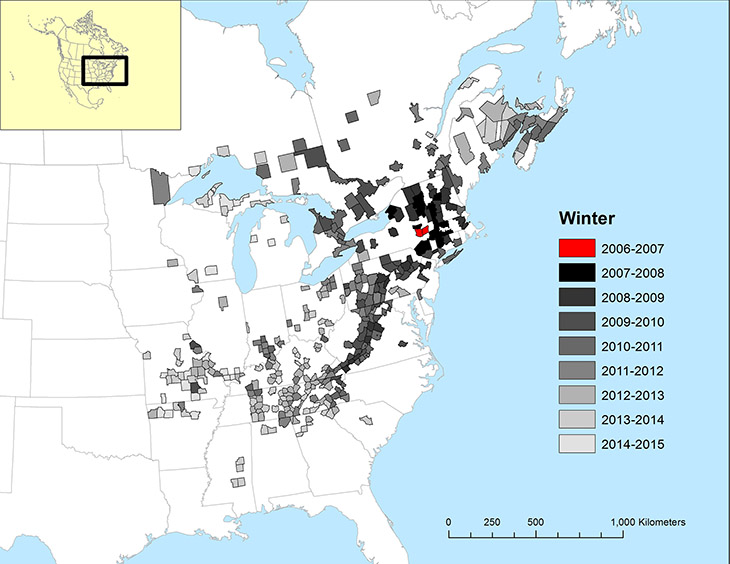Behavior, body size impact bats’ fight against white-nose syndrome

BIG BAT, LITTLE BAT New models that consider bat size in relation to white-nose syndrome indicate that smaller bats like the North American little brown bat, Myotis lucifugus (shown), may be more susceptible to the disease and will struggle to survive future winters.
U.S. Fish & Wildlife Service/Flickr (CC BY 2.0)







